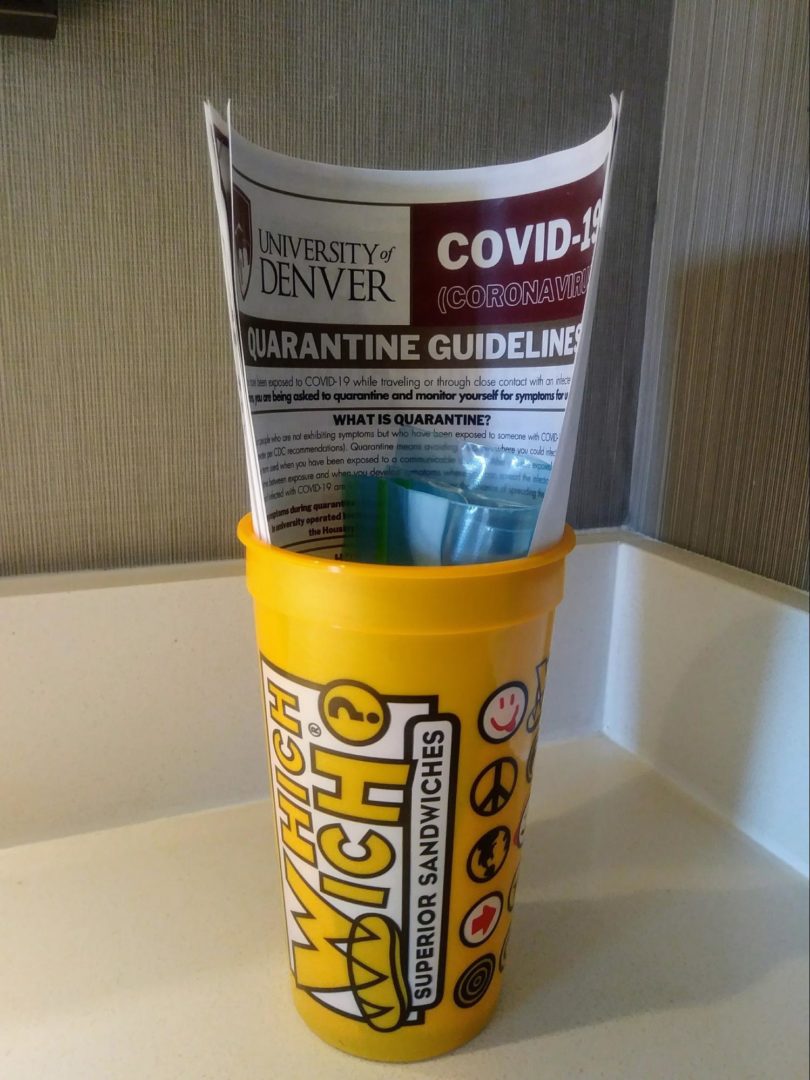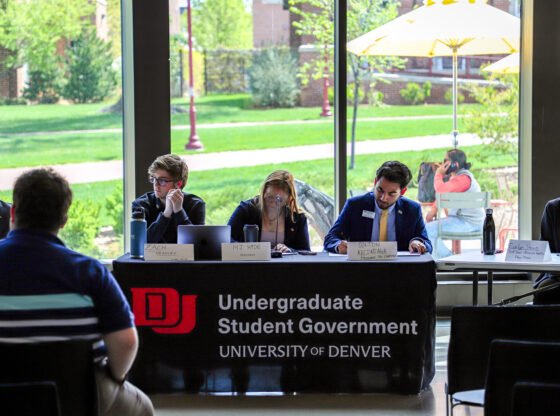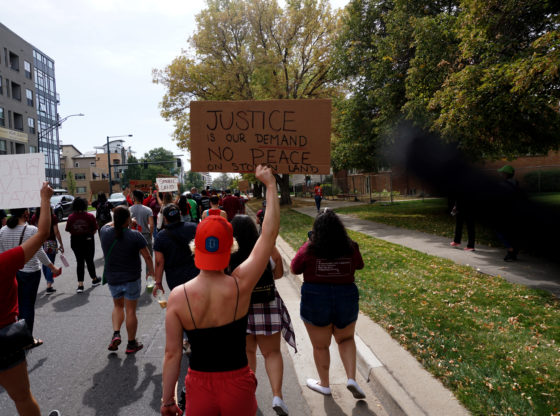As the coronavirus plagues Denver, DU is not left unscathed. In the last 14 days, the university has recorded a 6.07% positivity rate. In an effort to hold back the raging viral tide, the university has instituted quarantined housing. Currently, about 24% of isolation spaces and 10% of quarantine locations are occupied. Quarantine spaces are reserved for those who have been exposed or are showing COVID-19 symptoms while they await test results. Isolation spaces are only for those who tested positive for the virus.
One Saturday night, third-year students Kiana Marsan and Kaitlyn Shafer called the Health and Counseling Center (HCC) to report symptoms after both roommates had begun to feel ill.
“The nurse was really nice and sweet, but she didn’t give us much of an idea beforehand that we were going into quarantine,” said Marsan. “During one of our calls, she said the exact phrase, ‘I’m not going to sound the alarm.’”
Later that day, an hour before they were supposed to leave, Marsan and Shafer were informed they would be going into quarantine. The pair had to quickly pack their bags and await transportation outside their apartment.
“We go outside and wait for what we think is going to be a golf cart,” said Marsan. “When it gets there, we find out it’s actually an ambulance taking us to the Courtyard Hotel.”

Their superfluous ride took them to the Courtyard by Marriott Hotel in Cherry Creek where they were placed in separate rooms. This upending of their lives proved to be a stressful shift.
“I would have appreciated more notice and knowing that it was going to be an ambulance. I get anxiety around ambulances, as it isn’t something that has great memories for me,” said Marsan. “I would have liked to be able to emotionally prepare. The lack of communication was upsetting.”
Julie Frost—a junior hospitality major—experienced a different quarantine as she was sequestered to her bedroom in her sorority house. She quickly found obtaining consistent meals to be more worrying than the virus itself. “It was not ideal,” said Frost. “The president of our house had to bring me food.”
Marsan and Shafer faced similar difficulties at the Marriott, where food was not freely provided by the university. Students with a meal plan had to order Sodexo 24 hours in advance while those without were forced to order delivery. DU recommended they purchase the 50-swipe commuter plan.
“It [the commuter plan] didn’t seem reasonable, considering I didn’t know if I was going to be there three days or the full 14,” said Marsan. “I ended up ordering food the whole time which was an ordeal in itself since I wasn’t supposed to go down to the lobby. Sometimes, my delivery person would get confused and not bring it up to my room, and that would make the front desk assistant freak out.”
A precarious meal state only added to the daily stresses attributed to secluded living. Mixed messages from DU left Frost alone and bewildered as she struggled to make it through the days.
“I would wake up and just stay in the same place, there was nothing to look forward to. It was hard,” said Frost.
In her solitary confinement, Frost grew increasingly distressed. A lack of social interaction and space took a physical and mental toll. Her frustration was only compounded by a series of negative test results that did not lead to an early release. It was not until the last day of her quarantine when she received an email with mental health resources.
Reflecting on the moment, Frost said: “It was kind of too late.”
A lack of concrete mental health resources also harmed Shafer, who was left with only a pamphlet covered in URLs.

“They really do not provide a lot [in terms of mental health resources],” said Shafer. “I was on my own. I have to laugh, though, because all they gave us was a goodie bag. It was a plastic cup with empty Ziploc bags and paperwork about quarantine versus isolation.”
Some parents took to Facebook to spread the word about the struggles their child was experiencing in quarantine. Jonsey Su described her son’s complications in isolation on the DU Parents and Families Facebook group.
“Our son was 14 days in isolation, returned to living quarters, and was accused of leaving isolation and immediately re-quarantined. In the meanwhile, his dog died,” said Su. “It is not possible for a human being to remain mentally well over 20 days alone. DU must begin to consider the whole student. Beyond educating a student, caring for the entire mental well-being of these students should be a priority.”
A lack of comprehensive resources and information followed Marsan, who found the rules of the hotel and school to be quite different. The school informed Marsan that she could go on short walks and pick up food in the lobby, but the Marriott staff wanted her to stay in the room.
“After I accidentally went down [to the lobby], I got a panicked phone call from the person working at the front desk,” said Marsan. “I understood his concern about potentially getting COVID, but the rules had been unclear.”
A lack of clarity from DU proved to be a problem when Shafer tried to leave after receiving a negative test result.
“I got my negative test at almost midnight on Tuesday, which I thought was strange. When I woke up and saw it in the morning, I emailed the COVID Coordinator. They did not really understand my situation, even though I thought I outlined it pretty well in the initial email. They were like, ‘Well, did you self-quarantine?’”
After re-explaining her situation, Shafer was told to hold for approval from the main coordinator. After a few hours of waiting, she emailed the coordinator personally asking for permission to leave. It was not until her mother got involved that the school started listening.
“At 3 p.m., I still hadn’t heard back,” said Shafer. “At that point, I was starting to panic. They were probably going to leave the office in a couple hours, and I really didn’t want to stay there if I didn’t have to. I didn’t know what to do, and I was in class freaking out. I finally texted my mom, and she called the COVID Coordinator. 10 minutes later, I got an email saying, ‘Here’s how to get out of here. You’re free to go.’”
While Shafer was able to return home, only more cases and quarantines can be expected at the university. Over 4,000 cases were reported just this weekend in Denver, and DU is just beginning to feel the effects. Those students will hope for more than a few links and delayed emails to help them cope during a tempestuous phase in their lives.











